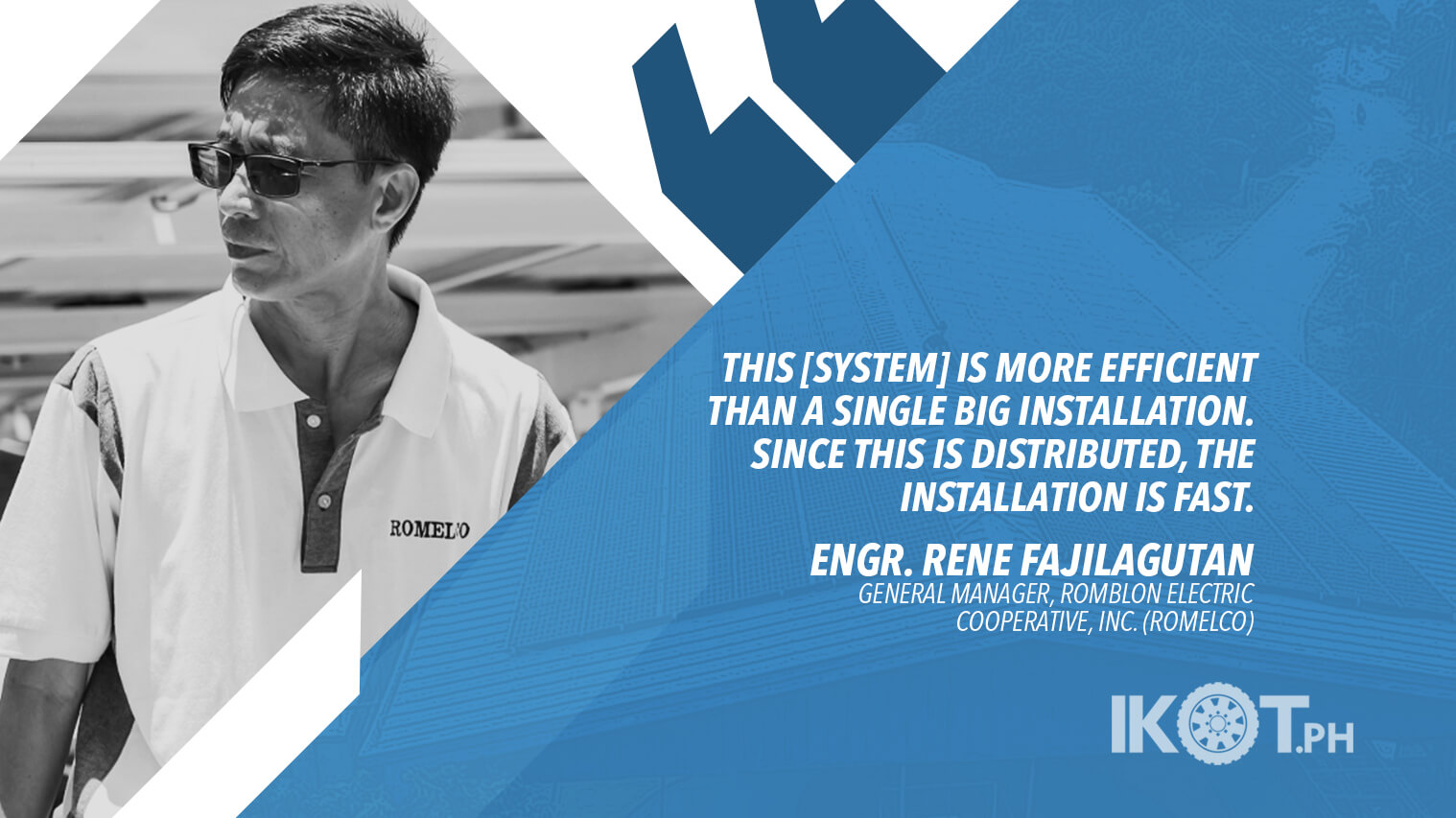In anticipation of higher electricity demand during the dry season, the Romblon Electric Cooperative, Inc. (ROMELCO) recently installed a 200-kilowatt (kW) disaster-ready solar photovoltaic system distributed in various villages under its franchise area.
ROMELCO reported to the National Electrification Administration (NEA) the initial installation of its “Grid-Tied Solar Roof Mounted Project,” which aims to provide clean, sustainable, and reliable energy to its consumers.
“This is our test-bed for the bigger distributed solar power plant.”
Built at a cost of P12 million, the distributed solar power systems are composed of 528 high-efficiency solar panels installed on the rooftops of the four covered courts in Barangays Lunas, Macalas, Mapula, and Ilauran.
The grid-connected installations are all located in the Municipality of Romblon, Romblon. Each distributed solar power system has a capacity of 50 kW, or a total installed capacity of 200 kW, which already generates electricity for the consumers.
“This [system] is more efficient than a single big installation. Since this is distributed, the installation is fast. It only took us less than a week (to set up the panels) for each rooftop,” ROMELCO general manager Rene Fajilagutan said.
ROMELCO plans to expand the project throughout its entire coverage area. “This is our test-bed for the bigger distributed solar power plant. This year, our target installation is a two-megawatt solar energy system,” he said.
The solar energy project was conceived in partnership with the local governments of Romblon. Fajilagutan said the power coop will pay lease to four barangays for the use of rooftop spaces for a period of 20 years.
The project is also part of ROMELCO’s commitment to generate 90 percent of its electricity supply from renewable energy (RE) sources, such as solar, wind, hydro, and biomass, by the end of the year.
“This [system] is more efficient than a single big installation.”
Among its other RE projects include 900-kW wind turbines located on the hills of Barangays Agnay, Bagacay, and Lonos; a 1,350-kW mini hydro power plant in Cantingas, San Fernando, Sibuyan Island; a 30-kW solar diesel hybrid generation system in Cobrador Island; and an 18-kW biomass gasifier in Barangay Alad, Romblon.
In another development, more electric cooperatives (ECs) are now venturing into renewable energy projects, according to the NEA Office of Renewable Energy Development (ORED).
Data from the NEA-ORED reveal that a feasibility study on the development of hybrid mini-grid system using renewable energy and battery system for four ECs is currently underway and subsidized by the agency.
A separate feasibility study on the hybridization of existing diesel power plants with renewable energy and battery system for three ECs in Eastern Visayas is also ongoing with funding through a subsidy from the National Economic and Development Authority (NEDA).
Meanwhile, 10 ECs are also planning to develop micro-grid projects in their respective franchise areas. The Association of Isolated Electric Cooperatives, Inc. (AIEC), however, clarified that these planned projects have no funding yet.

